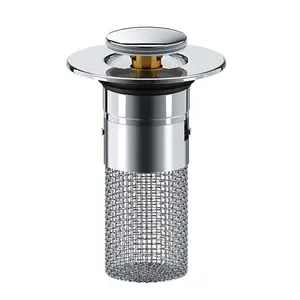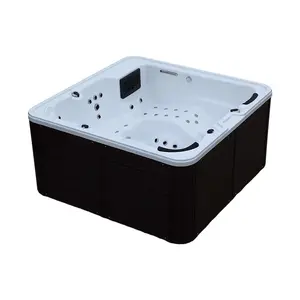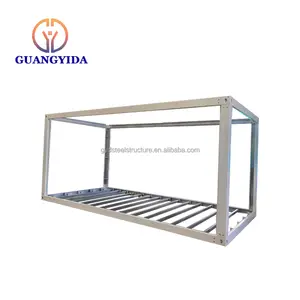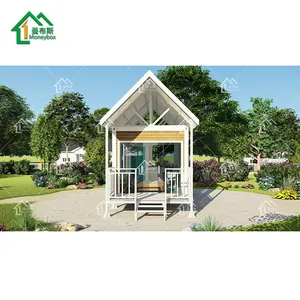Popular in your industry



























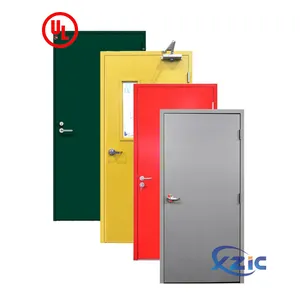









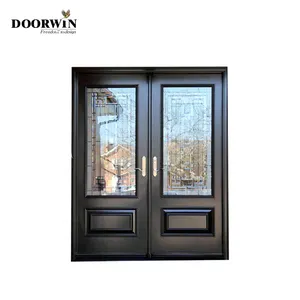





















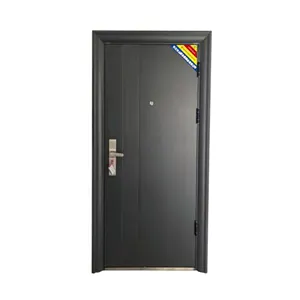






































































































































































Top categories
About buy fire doors
Introduction
Fire doors are an essential safety feature in any building, providing a critical line of defense against the spread of fire and smoke. They are not just functional but can also be aesthetically pleasing, blending seamlessly with the building's design. This comprehensive guide will delve into the world of fire doors, exploring their construction, importance, regulations, and the considerations to make when choosing the right one. We will also discuss how to maintain these doors for optimal performance and how they can be integrated into your interior design without compromising style.
Understanding Fire Doors
Fire doors are essential safety components in commercial buildings, designed to slow or stop the spread of flames and smoke. They are constructed from materials like wood, steel, fiberglass, and fire-rated glass. These doors work in conjunction with surrounding passive fire protection systems to provide around-the-clock defense against fire and enable safe and unobstructed passage out of a building. Fire-rated doors are required to be self-closing and positive latching, and their fire ratings typically range from 20 to 180 minutes depending on code criteria.
What is a Fire Door?
A fire door is a door with a fire-resistance rating, used as part of a passive fire protection system to reduce the spread of fire and smoke between separate compartments of a structure. It enables safe egress from a building or structure. In North American building codes, it is often referred to as a closure. In Europe, fire doors are known as fire-resisting door sets. All fire doors must be installed with the appropriate fire resistant fittings, such as the frame and door hardware, to fully comply with any fire regulations.
Importance of Fire Doors
Fire doors play a crucial role in saving lives and halting the spread of fire, supporting both evacuation and firefighting efforts. They form an integral part of a building's passive fire protection system and are a requirement in most premises, including residential, public buildings, offices, and factories. Fire doors are engineered to resist fire spread for a minimum of 30 minutes, allowing people to evacuate if other routes are compromised. They are constructed with special materials and fitted with intumescent seals that seal the door upon heat impact, preventing fire and smoke spread.
Fire Door Standards and Regulations
Fire doors are tested to NFPA 252, UL 10 B, or UL 10 C standards, which include fire endurance and hose stream tests. The International Building Code (IBC) requires fire doors to be tested with positive pressure. Fire doors must also limit heat transmission, control smoke and draft, and incorporate safety glazing. Over the years, the International Code Committee (ICC) has clarified the fire and safety requirements for glazing in fire doors. The ICC also provides guidelines on the size of glazing panels in fire doors based on their fire resistance rating.
International Fire Door Standards
Fire door assemblies are tested to NFPA 252, Standard Methods of Fire Tests of Door Assemblies or UL 10 B and UL 10 C, Standards for Fire Tests of Door Assemblies. The International Building Code (IBC) requires fire doors to be tested with positive pressure, using either UL 10C or NFPA 252. Fire rated doors are subjected to endurance testing and hose stream test. In certain applications, fire doors are also required to limit the transmission of heat, known as temperature rise doors. Some fire rated doors may also require testing for smoke infiltration under UL 1784.
Local Fire Door Regulations
Local fire door regulations often build upon existing international codes, tailoring them to specific regional risks. For instance, the California Fire Code stipulates additional requirements such as the direction of door swing, dimensions, locks, and the use of powered versus manual doors. These additional regulations aim to enhance public safety and should be incorporated into any structural design. Always check for any additional state or local codes that may apply to your area, especially if it's a region with increased fire risk.
Choosing the Right Fire Door
Choosing the right fire door hardware is crucial for safety. Consider the fire rating, type, and intended use of the hardware. Fire door hinges, made of steel or stainless steel, keep the door in place during a fire. Fire door locks secure the door and prevent unauthorized entry. Panic bars allow occupants to quickly open the door in an emergency. Smoke seals prevent smoke from entering through gaps around the door. Fire door closers automatically close the door after it has been opened. All these components must be tested for fire resistance.
Fire Resistance Rating
Fire rated doors undergo rigorous testing to ensure they can withstand extreme heat, limiting flames and smoke. They are subjected to endurance testing where they are exposed to heat up to 1925 degrees F for up to 180 minutes. If successful, they are certified with an endurance rating of 20/45/60/90/180 minutes. Some fire doors also limit heat transmission from one side to the other, known as temperature rise doors. These doors carry a temperature rise rating of 250, 450, or 650 degrees F, indicating the maximum rise above ambient temperature during the first 30 minutes of a standard fire endurance test.
Material Considerations
Fire-rated doors are constructed of materials that work together to slow or stop the spread of flames, smoke, and, in certain applications, radiant and conductive heat transfer. Common materials include wood, steel, fiberglass, and fire-rated glass—or a combination of these materials. Fire-rated doors are referred to as assemblies and include the door, frame, hardware, glazing, and component parts. Individual component parts are not required to be supplied by the same manufacturer; however, they must be classified and labeled for use in a fire door assembly.
Size and Installation
Installing a fire door is a complex procedure that requires a detailed understanding and should be done by someone with the correct training. Incorrect installation can compromise the door's performance, putting property and lives at risk. Door frames form part of the fire door assembly and must be manufactured and fitted correctly. Internal fire doors must also incorporate the correct intumescents or smoke seals, which play a crucial role in restricting the spread of fire and smoke. Ironmongery, including hinges, overhead door closers, latches, locks, and handles, forms part of the fire door’s test accreditation and must be fitted and maintained correctly.
Aesthetics and Style
TruStile offers a wide range of fire doors that don't compromise on style. With hundreds of styles and unlimited custom capabilities, you can select fire-rated doors that match your interior design. TruStile's fire doors feature full panel relief and are designed to match the details of their standard doors. They also offer a revolutionary frame system that provides the appearance of natural wood in 20- through 90-minute fire ratings. This ensures a uniform and architecturally-correct aesthetic on all doors, frames, and millwork for every opening.
Matching Fire Doors with Interior Design
Fire doors don't always have to disrupt your architectural design. As long as they comply with all official regulations, it's possible to incorporate them into your design without altering the aesthetic pattern of the building. For instance, the 'Acute Intervention' project by David Stanley Architects and Romy Grabosch cleverly integrates a hidden fire door. This shows that safety and style can coexist, making fire doors a versatile choice for various architectural designs.
Popular Fire Door Styles
Fire doors come in a variety of styles to match your interior design. A popular choice is the modern style door with straight diagonal lines, featuring deeper u-grooves. Another standout is the FD30 spec crittall door in black steel, which adds a touch of elegance to any kitchen. For a classic look, wooden doors, whether laminated, walnut, or cherry, are a great choice. They offer a strong presence and natural elegance. You can also opt for internal doors with glass, which come with toughened safety glass as standard. These doors can be half glazed, frosted, or full glass panel doors.
Maintaining Your Fire Door
Maintaining a fire rated door is crucial for its effective operation. Regular visual inspections and operational checks are necessary to identify any potential hazards or damages. Annually, a drop test should be conducted to ensure the door closes completely and accurately during emergencies. If any issues are found, they should be corrected before the drop test. The door should be reset according to the manufacturer's instructions after the test. Remember, these steps are not a substitute for individual manufacturer's instructions, so always refer to them when necessary.
Routine Checks and Repairs
Fire doors require annual inspection and testing, with the building owner responsible for documentation. Common defects include failure of the door latch, damaged or missing door closer, painted over or missing door or frame label, blocked door, and an excessive gap between the door and the frame or floor. These defects should be corrected promptly. Inspections can be performed by a qualified person as defined by NFPA 80, or outsourced to competent firms. The inspection report should detail each fire door's condition, with any deficiencies prioritized for repair.
Long-term Maintenance Tips
Proper maintenance of fire-rated doors is crucial for their effectiveness. According to Standard 80 of the National Fire Protection Agency, these doors must be inspected annually by a trained professional. The inspection includes a visual check of the door assembly, an operational check to ensure all components are working correctly, and a drop test to confirm the door closes accurately in an emergency. Regular maintenance ensures the door will provide the necessary protection when needed.
Conclusion
Fire doors are a crucial component of a building's passive fire protection system, designed to save lives and property by slowing the spread of fire and smoke. Choosing the right fire door involves considering its fire resistance rating, material, size, and installation. It's also important to remember that fire doors can be stylish and blend seamlessly with your interior design. Regular maintenance and inspection are key to ensuring their effectiveness. Whether you're a building owner, architect, or designer, understanding the importance of fire doors and the regulations surrounding them is vital for safety and compliance with building codes.
